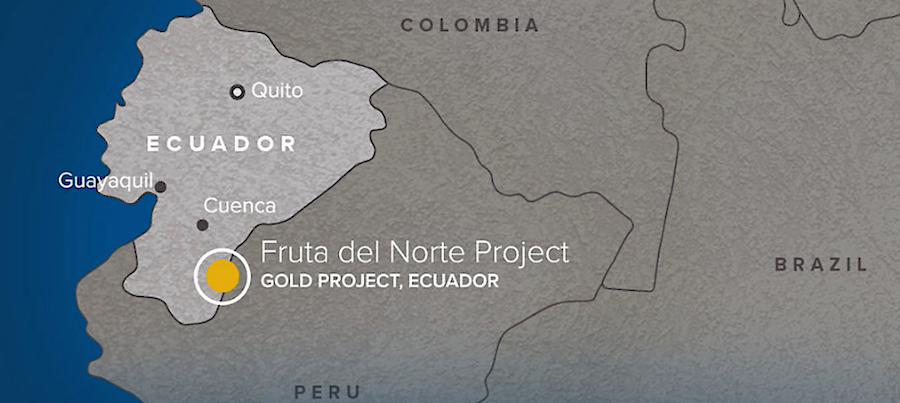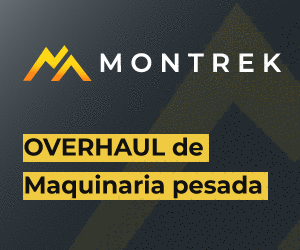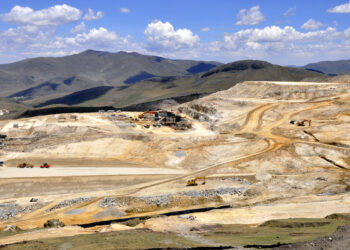Canada’s Lundin Gold (TSX:LUG) has begun production at its Fruta del Norte gold-silver mine in Ecuador, the country’s largest, after spending $1 billion over five years.
The opening ceremony, held on Nov. 14, was attended by Ecuador’s
vice president, Otto Sonnenholzner, and energy minister, Carlos Perez, as well
as provincial and local authorities and key stakeholders, the company said.
The first doré bar was produced on Nov. 16 from the gravity circuit at the mine, following the reception of the last two permits required to move it into production.
The Vancouver-based miner said production of gold
concentrate, as part of the commissioning activities, was well advanced, with
the first containers being loaded with marketable concentrate. Commissioning
of the carbon in leach circuit, in turn, is ongoing and nearing completion, Lundin
noted.
Lundin has been developing the asset for almost two years, following a 2016 agreement with Ecuador’s government
Based on the current projections, the first export of concentrate and doré is projected to happen by mid-December. This means the company is on track to beginning commercial production at Fruta del Norte in the second quarter of 2020.
Lundin, worth almost C$1.7 billion, has been developing the asset for almost two years, following a 2016 agreement with Ecuador’s government. The deal allowed it to move ahead with the project, located in the southeastern Amazon province of Zamora Chinchipe.
The company acquired Fruta del Norte in 2014 for $240
million from fellow Canadian miner Kinross Gold (TSX:K)
(NYSE:KGC), which had to halt operations after being unable to reach an
agreement with authorities regarding the terms for developing the
asset.
The underground gold and silver mine contains six of
Lundin’s 29 mining concessions and covers 70,000 hectares of land. Discovered
in 2006, Fruta del Norte is expected to produce almost 4.7 million ounces of
gold over a 15 year mine life.
“The opening of Fruta del Norte is a turning point for the
mining industry in Ecuador,” Keith Barron, who discovered the deposit and
is now Aurania Resources’ chairman and chief executive said in a separate statement.
“For the first time in Ecuador’s history, gold mining will be carried out in a responsible, technically safe and sustainable way,” he added.

Ecuador has gained ground as a mining investment destination over the past two years, with top miners entering into joint ventures or investing in juniors to gain exposure to projects in the country.
Anglo American (LON: AAL) also landed in the South American
nation through a deal with Canada’s Luminex Resources (TSX-V: LR). The company
plans to develop two copper and gold concessions there.
Currently, Ecuador’s emerging mining sector employs 5,000 people, but estimates the figure will rise to about 16,000 next year if the country’s finances don’t take a turn for the worse.
The outlook is dubious, however, as Ecuador dollar sovereign bonds were the worst performing in emerging markets on Monday. The tumble came after Congress rejected a reform bill presented by President Lenin Moreno as part of a $4.2 billion financing agreement with the International Monetary Fund (IMF).
“The inconvenient reality is that if Ecuador loses IMF support, then they lose market access,” Siobhan Morden, head of Latin America fixed income strategy at Amherst Pierpont Securities, wrote in a note.
Moreno’s measures to comply with the IMF program have been criticized by the wide range of topics included — from student debt to mining policy and central bank autonomy.
Canada’s Lundin Gold (TSX:LUG) has begun production at its Fruta del Norte gold-silver mine in Ecuador, the country’s largest, after spending $1 billion over five years.
The opening ceremony, held on Nov. 14, was attended by Ecuador’s
vice president, Otto Sonnenholzner, and energy minister, Carlos Perez, as well
as provincial and local authorities and key stakeholders, the company said.
The first doré bar was produced on Nov. 16 from the gravity circuit at the mine, following the reception of the last two permits required to move it into production.
The Vancouver-based miner said production of gold
concentrate, as part of the commissioning activities, was well advanced, with
the first containers being loaded with marketable concentrate. Commissioning
of the carbon in leach circuit, in turn, is ongoing and nearing completion, Lundin
noted.
Lundin has been developing the asset for almost two years, following a 2016 agreement with Ecuador’s government
Based on the current projections, the first export of concentrate and doré is projected to happen by mid-December. This means the company is on track to beginning commercial production at Fruta del Norte in the second quarter of 2020.
Lundin, worth almost C$1.7 billion, has been developing the asset for almost two years, following a 2016 agreement with Ecuador’s government. The deal allowed it to move ahead with the project, located in the southeastern Amazon province of Zamora Chinchipe.
The company acquired Fruta del Norte in 2014 for $240
million from fellow Canadian miner Kinross Gold (TSX:K)
(NYSE:KGC), which had to halt operations after being unable to reach an
agreement with authorities regarding the terms for developing the
asset.
The underground gold and silver mine contains six of
Lundin’s 29 mining concessions and covers 70,000 hectares of land. Discovered
in 2006, Fruta del Norte is expected to produce almost 4.7 million ounces of
gold over a 15 year mine life.
“The opening of Fruta del Norte is a turning point for the
mining industry in Ecuador,” Keith Barron, who discovered the deposit and
is now Aurania Resources’ chairman and chief executive said in a separate statement.
“For the first time in Ecuador’s history, gold mining will be carried out in a responsible, technically safe and sustainable way,” he added.

Ecuador has gained ground as a mining investment destination over the past two years, with top miners entering into joint ventures or investing in juniors to gain exposure to projects in the country.
Anglo American (LON: AAL) also landed in the South American
nation through a deal with Canada’s Luminex Resources (TSX-V: LR). The company
plans to develop two copper and gold concessions there.
Currently, Ecuador’s emerging mining sector employs 5,000 people, but estimates the figure will rise to about 16,000 next year if the country’s finances don’t take a turn for the worse.
The outlook is dubious, however, as Ecuador dollar sovereign bonds were the worst performing in emerging markets on Monday. The tumble came after Congress rejected a reform bill presented by President Lenin Moreno as part of a $4.2 billion financing agreement with the International Monetary Fund (IMF).
“The inconvenient reality is that if Ecuador loses IMF support, then they lose market access,” Siobhan Morden, head of Latin America fixed income strategy at Amherst Pierpont Securities, wrote in a note.
Moreno’s measures to comply with the IMF program have been criticized by the wide range of topics included — from student debt to mining policy and central bank autonomy.
Canada’s Lundin Gold (TSX:LUG) has begun production at its Fruta del Norte gold-silver mine in Ecuador, the country’s largest, after spending $1 billion over five years.
The opening ceremony, held on Nov. 14, was attended by Ecuador’s
vice president, Otto Sonnenholzner, and energy minister, Carlos Perez, as well
as provincial and local authorities and key stakeholders, the company said.
The first doré bar was produced on Nov. 16 from the gravity circuit at the mine, following the reception of the last two permits required to move it into production.
The Vancouver-based miner said production of gold
concentrate, as part of the commissioning activities, was well advanced, with
the first containers being loaded with marketable concentrate. Commissioning
of the carbon in leach circuit, in turn, is ongoing and nearing completion, Lundin
noted.
Lundin has been developing the asset for almost two years, following a 2016 agreement with Ecuador’s government
Based on the current projections, the first export of concentrate and doré is projected to happen by mid-December. This means the company is on track to beginning commercial production at Fruta del Norte in the second quarter of 2020.
Lundin, worth almost C$1.7 billion, has been developing the asset for almost two years, following a 2016 agreement with Ecuador’s government. The deal allowed it to move ahead with the project, located in the southeastern Amazon province of Zamora Chinchipe.
The company acquired Fruta del Norte in 2014 for $240
million from fellow Canadian miner Kinross Gold (TSX:K)
(NYSE:KGC), which had to halt operations after being unable to reach an
agreement with authorities regarding the terms for developing the
asset.
The underground gold and silver mine contains six of
Lundin’s 29 mining concessions and covers 70,000 hectares of land. Discovered
in 2006, Fruta del Norte is expected to produce almost 4.7 million ounces of
gold over a 15 year mine life.
“The opening of Fruta del Norte is a turning point for the
mining industry in Ecuador,” Keith Barron, who discovered the deposit and
is now Aurania Resources’ chairman and chief executive said in a separate statement.
“For the first time in Ecuador’s history, gold mining will be carried out in a responsible, technically safe and sustainable way,” he added.

Ecuador has gained ground as a mining investment destination over the past two years, with top miners entering into joint ventures or investing in juniors to gain exposure to projects in the country.
Anglo American (LON: AAL) also landed in the South American
nation through a deal with Canada’s Luminex Resources (TSX-V: LR). The company
plans to develop two copper and gold concessions there.
Currently, Ecuador’s emerging mining sector employs 5,000 people, but estimates the figure will rise to about 16,000 next year if the country’s finances don’t take a turn for the worse.
The outlook is dubious, however, as Ecuador dollar sovereign bonds were the worst performing in emerging markets on Monday. The tumble came after Congress rejected a reform bill presented by President Lenin Moreno as part of a $4.2 billion financing agreement with the International Monetary Fund (IMF).
“The inconvenient reality is that if Ecuador loses IMF support, then they lose market access,” Siobhan Morden, head of Latin America fixed income strategy at Amherst Pierpont Securities, wrote in a note.
Moreno’s measures to comply with the IMF program have been criticized by the wide range of topics included — from student debt to mining policy and central bank autonomy.
Canada’s Lundin Gold (TSX:LUG) has begun production at its Fruta del Norte gold-silver mine in Ecuador, the country’s largest, after spending $1 billion over five years.
The opening ceremony, held on Nov. 14, was attended by Ecuador’s
vice president, Otto Sonnenholzner, and energy minister, Carlos Perez, as well
as provincial and local authorities and key stakeholders, the company said.
The first doré bar was produced on Nov. 16 from the gravity circuit at the mine, following the reception of the last two permits required to move it into production.
The Vancouver-based miner said production of gold
concentrate, as part of the commissioning activities, was well advanced, with
the first containers being loaded with marketable concentrate. Commissioning
of the carbon in leach circuit, in turn, is ongoing and nearing completion, Lundin
noted.
Lundin has been developing the asset for almost two years, following a 2016 agreement with Ecuador’s government
Based on the current projections, the first export of concentrate and doré is projected to happen by mid-December. This means the company is on track to beginning commercial production at Fruta del Norte in the second quarter of 2020.
Lundin, worth almost C$1.7 billion, has been developing the asset for almost two years, following a 2016 agreement with Ecuador’s government. The deal allowed it to move ahead with the project, located in the southeastern Amazon province of Zamora Chinchipe.
The company acquired Fruta del Norte in 2014 for $240
million from fellow Canadian miner Kinross Gold (TSX:K)
(NYSE:KGC), which had to halt operations after being unable to reach an
agreement with authorities regarding the terms for developing the
asset.
The underground gold and silver mine contains six of
Lundin’s 29 mining concessions and covers 70,000 hectares of land. Discovered
in 2006, Fruta del Norte is expected to produce almost 4.7 million ounces of
gold over a 15 year mine life.
“The opening of Fruta del Norte is a turning point for the
mining industry in Ecuador,” Keith Barron, who discovered the deposit and
is now Aurania Resources’ chairman and chief executive said in a separate statement.
“For the first time in Ecuador’s history, gold mining will be carried out in a responsible, technically safe and sustainable way,” he added.

Ecuador has gained ground as a mining investment destination over the past two years, with top miners entering into joint ventures or investing in juniors to gain exposure to projects in the country.
Anglo American (LON: AAL) also landed in the South American
nation through a deal with Canada’s Luminex Resources (TSX-V: LR). The company
plans to develop two copper and gold concessions there.
Currently, Ecuador’s emerging mining sector employs 5,000 people, but estimates the figure will rise to about 16,000 next year if the country’s finances don’t take a turn for the worse.
The outlook is dubious, however, as Ecuador dollar sovereign bonds were the worst performing in emerging markets on Monday. The tumble came after Congress rejected a reform bill presented by President Lenin Moreno as part of a $4.2 billion financing agreement with the International Monetary Fund (IMF).
“The inconvenient reality is that if Ecuador loses IMF support, then they lose market access,” Siobhan Morden, head of Latin America fixed income strategy at Amherst Pierpont Securities, wrote in a note.
Moreno’s measures to comply with the IMF program have been criticized by the wide range of topics included — from student debt to mining policy and central bank autonomy.














